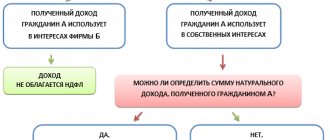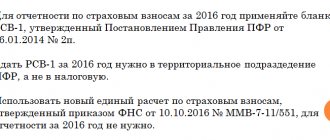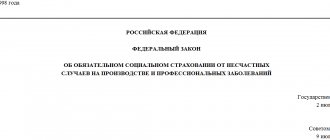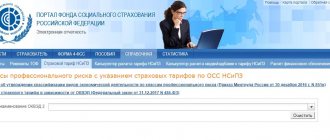Basic Concepts
Since 2015, citizens’ pension rights are expressed mainly in pension points. Legislation obliges citizens to acquire a certain length of service before receiving an old-age insurance pension, as well as to accumulate a certain number of points in their personal account.
The requirements have been constantly increasing since 2015, and if initially at least 6 years of experience and 6.6 points were required, then a significant increase in requirements followed. The minimum experience and points increase every year. In 2021, you need 10 years of experience / 16.2 points on your Pension Fund account.
- 2020 – 11 years / 18.6 points;
- 2021 – 12 years / 21 points;
- 2022 – 13 years / 23.4 points;
- 2023 – 14 years / 25.8 points;
- 2024 – 15 years / 28.2 points.
From 2025, the minimum length of service will always be 15 years, and the points must be at least 30.
You can pay a pension contribution for yourself in some circumstances, but most often employers do this, deducting a certain part from their salary to the Pension Fund - 22%. In this way, the state replenishes the Pension Fund budget and accrues pension rights to the citizen for whom the contribution is made.
If there are not enough points or experience, the citizen will have to earn them in order to retire. If within 5 years from the date of retirement age a person does not reach the required indicators, he will be able to apply for a social old-age pension - that is, the lowest pension in the Russian Federation. But there is an alternative - purchasing the missing experience and points.
But the legislation does not use the terms of buying or selling individual pension coefficients. Instead, the concept of voluntary legal relations with the Pension Fund is used. And it is for them that points and even experience are awarded.
How to enter into voluntary legal relations
Voluntary contributions to a pension can only be paid if the citizen enters into a separate agreement with the Pension Fund. Based on it, all funds transferred during the year are converted into pension points.
Registration of voluntary legal relations with the Fund is carried out on the basis of an application, which is submitted to the Pension Fund Client Service at the place of residence. The application must also be accompanied by SNILS (green laminated card) and a passport.
After reviewing the application and concluding an agreement, the citizen who enters into legal relations with the Pension Fund will be provided with details for transfers. The payment generation service is also available on the Fund’s website.
What is voluntary pension insurance
The concept of voluntary pension insurance is not disclosed by current legislation. Only in some regulatory documents (for example, the Tax Code) does the term non-state pension provision (hereinafter also referred to as NPO) appear, which in practice is a synonymous concept.
In simple words, it means entering into a voluntary contractual relationship with a non-state pension fund to form an additional pension to the state pension. After concluding such an agreement, the citizen or his employer has an obligation to make payments within a certain period of time in the amount established by the agreement.
All funds transferred voluntarily will form an additional pension in the future . Also, the specified finances can be moved from one management organization to another or received by the citizen or his heirs.
In addition to NPFs, voluntary pension insurance programs are also offered by insurance companies. In this case, an insurance contract is concluded, and the insured person or policyholder makes periodic payments towards a future pension.
Important! Non-state pensions are not regulated by separate legislation, and the procedure for its formation is determined by the internal rules of the NPF. At the same time, the activities of the fund within the framework of voluntary insurance should not contradict the law.
Cost of points
Until the end of 2021, points were quite expensive for citizens. So, for 60 thousand rubles. a citizen could purchase only about 2 IPC. But in 2021, buying points is cheaper - the cost has been halved (as well as the number of points actually purchased has been halved).
This means that the minimum price required by the Pension Fund for 1 point will be (approximately) 30 thousand rubles. More precisely, it can be calculated using the formula:
Minimum wage x0.22x12
For 2021, the “minimum wage” is set at RUB 11,280. Therefore, for the year the minimum contribution amount is 29,779.2 rubles.
State co-financing of voluntary contributions to funded pension
The program, designed to give the civilian population of the Russian Federation the opportunity to participate in the formation of their pension capital, began from the time Federal Law No. 56-FZ of April 30, 2008 was adopted. It came into force on October 1, 2008, and from that moment the Pension Fund began accepting applications from citizens who intend to participate in the co-financing program offered by the state.
This law regulated the deadlines for citizens to submit applications to participate in the program, and a period was established from 10/01/2008 to 09/30/2013.
How beneficial is a voluntary insurance pension?
Considering the fairly high cost of the point, many will find such a deal unprofitable. But let's turn to arithmetic.
Moscow resident Angela M. turned to a lawyer with a question: how can one retire if 3 pension points are missing due to a small salary. Currently, at 55.5 years old, she cannot find a job. The lawyer explained that, in accordance with the law, a woman can acquire the missing points by paying approximately 90,000 rubles in 2021, or work another year for a salary of over 23,000 rubles. in this case, buying points for Angela will be more profitable.
By entering into voluntary legal relations if he does not have enough points for retirement, a citizen quickly begins to receive income. From the example considered, the purchase will be profitable, since the woman does not have a source of income and the opportunity to go to work. Given that the points requirements will increase every year, Angela will have to wait until she is 65 (that is, another 11 years) to qualify for the Old Age Social Security pension.
In case of purchase, she will begin to receive a pension immediately after registration. At the same time, 3 points purchased at a price of RUB 89,337.6. will give a monthly income of 261.72 rubles. Of course, in order to “recoup” the almost 90 thousand rubles spent. it will take 28 years. Just don’t forget that Angela in the example is not buying the points themselves, but the right to a pension. Therefore, voluntary legal relations with the Pension Fund should be considered solely as an investment with a high ROI.
And if we consider the purchase of points from this point of view, then the benefit is obvious, and the invested 90,000 rubles. return with profit already in the 8th month of receiving your pension. And that's why.
Since Angela can only claim a minimum pension, even taking into account the purchase of points, her amount with the help of social security payments will be raised to the level of the cost of living of a pensioner in Moscow. For 2019, it was adopted in the amount of 12,115 rubles. monthly. Consequently, if a woman acquires the right to a pension, she begins to receive a monthly allowance. If she does not buy the missing points, then she will have to live “on her own” for 11 years, which seems incredible in conditions of unemployment. Let's not forget that a woman cannot find a job.
Program period
The co-financing program is valid for a ten-year period. During this period, each participant who has made at least one payment as a voluntary contribution has the right to stop and resume payment of contributions at any time. From the end of the ten-year period, a citizen also has the right to replenish his account, but without government support, so the amounts will not be doubled.
Conclusion: the intention of the program of co-financing by the state of voluntary contributions of its participants is to increase the size of citizens’ pensions. Under the terms of this program, the amounts contributed by participants will be doubled, as a result of which the funded part of the pension should increase. State co-financing will cease for the participant after a 10-year period has passed from the date the citizen submitted his application to participate in the program.
Who needs to buy points?
Not only those who are slightly short of the right to a pension can enter into voluntary legal relations. It is also worth buying points for those who:
- works abroad, but plans to receive a pension in Russia;
- citizens who have high salaries and are willing to pay additional pension contributions for retirement, especially if they have reached the limit on payments from salary;
- people who receive income from professional activities without forming a company or individual entrepreneur (self-employed);
- engaged in entrepreneurship, farming;
- carries out legal, notarial and other activities that do not provide for mandatory contributions to the Pension Fund of Russia.
But you should understand that these are not contributions to a funded pension. Yes, they are also paid voluntarily, but in this case the citizen enters into legal relations not with the Pension Fund of the Russian Federation, but with the NPF.
Due to frequent updates to legislation and the legal uniqueness of each situation, we recommend obtaining a free telephone consultation with a lawyer. You can ask your question by calling the hotline number 8 (800) 555-40-3 6 or write it in the form below.
Difference between voluntary and mandatory
The main differences between these two types of insurance lie in their very names. Mandatory implies the obligation of a citizen or his employer to make contributions to the Pension Fund for the future state benefit of an elderly citizen. The decision on voluntary insurance is made by the person himself or his employer; the state leaves the possibility of using this instrument at the discretion of these individuals themselves.
Within the framework of an NGO, a person entering into a contractual relationship with a foundation has the opportunity, at his own discretion, to determine:
- amount of payments;
- the duration of their transfer;
- frequency of application;
- formation scheme (inheritance rules, payment start period, etc.).
NPO rules are established by management companies independently, but must comply with the Standard Insurance Rules approved by the Central Bank. The specified rules of NPFs are registered with the Bank of Russia, and if changes are made to them, they are also subject to registration.
The role of the state in the formation of NGOs is to establish general legislative norms and regulate the activities of NPFs. The authorities do not directly participate in the formation of non-state pensions, since it is only additional to compulsory insurance.
Attention! Do not confuse NGOs with the voluntary transfer of additional insurance contributions within the framework of compulsory pension insurance. The latter is strictly regulated by the state, administered by the Pension Fund of the Russian Federation, and a separate legislative act was adopted as part of co-financing.
Let's create a decent pension
First, let’s calculate how much money can be allocated for long-term investment without harming current life.
How to create a decent pension?
To form a decent pension , you need to proceed from how much money you can afford to contribute monthly for these needs. Please note that this will have to be done over many years. Once you decide on the size of the allowable payment, find some kind of non-state pension fund . Consider all the proposed pension options, and then enter into an agreement with the insurer .
According to the concluded agreement, fulfill your obligations. Do not violate the terms of the contract . For greater confidence, once every six months or a year, make a request to a non-state pension fund about joint or personal pension accounts.
It was stated above that to diversify risks, an investment portfolio . This is what companies do, but you can do it too. To do this, you can enter into contracts with different insurance companies, distributing the invested funds between them. This is not Forex, we are talking about a long-term deposit , so there is no point in taking risks and all selected companies must meet the requirements described above.
The further procedure will be as follows:
- We choose a non-state pension fund as an insurer;
- we determine the optimally suitable future pension program;
- we conclude an agreement with the insurer;
- we fulfill the terms of the agreement on the payment of pension contributions;
- Periodically (at the end of the year) we request information from NPFs about the status of joint and personal pension accounts.
A reliable option may be to use several pension schemes by concluding agreements with several insurers .
DPS Agreement
The DPS agreement is concluded between 3 parties:
- NPF;
- the policyholder;
- insurance company.
The agreement is drawn up in favor of the participant, that is, the policyholder. According to this document, the insurer undertakes, upon reaching the pension period by the participant, to transfer monthly payments generated in the process of making insurance contributions during the period specified in the contract.
The pensioner can receive not only pensions, but also one-time pension benefits, as well as redemption amounts.
Important! Upon termination of the contract, third parties do not have the right to demand compensation. For these subjects, only 2 types of payments are established:
- pensions;
- one-time pension benefits.
An agreement with the insurer can be concluded by both a legal entity and an individual. However, a legal entity does not have the right to enter into an agreement in its own favor. Recipients can be:
- fund participant;
- pensioner;
- other third parties.
Important! For the traffic police agreement, only written form is established.
Contents of this document:
- information about the parties;
- item;
- information about third party beneficiaries;
- number;
- name of the scheme;
- special data;
- subjective complex of parties;
- procedure for payment of insurance premiums;
- information about the responsibilities of the parties;
- duration of the agreement;
- conditions for termination/termination of the contract;
- procedure for resolving controversial issues;
- depositor details.
Under a traffic insurance contract, the insurer has 2 main obligations:
- accumulation of funds relative to the investor;
- payment of pensions and other monetary benefits to pensioners and fund participants.
The moment the obligations come into force is the day the participant makes the first insurance premium.
The contract terminates if the obligations of both parties are fulfilled or due to the occurrence of other reasons that constitute the basis for its termination or termination.
The condition for the insurer's obligations to come into force is a well-drafted pension agreement. The accumulation period specified in the agreement is the time interval between the occurrence of obligations and their fulfillment in full. Payments of savings must be made at the location of the insurer.
The key obligation of a non-state pension fund or an insurance company is the payment of an additional pension.
The DPS agreement is terminated:
- upon full fulfillment of insurance obligations to the depositor and participant;
- due to termination of the agreement;
- due to the death of a participant or pensioner;
- when a participant or pensioner is declared missing;
- upon liquidation of a legal entity that is a depositor;
- due to the occurrence of force majeure circumstances specified in the agreement.
The pension agreement is terminated in the following cases:
- by agreement of the parties;
- when the investor decides to transfer to another fund;
- in case of violation of the established payment procedure by the depositor (unilateral termination);
- if the terms of the traffic police agreement are violated by one of the parties.
Important! If the investor has concluded an agreement in his favor, he has the right to demand termination at any time. In this case, the agreement loses its force 3 months after the investor submits an application for termination.
The terms of the DPS agreement can be changed at the initiative of both parties: policyholders or insured persons. Participants and pensioners have the right to contact the NPF at any time with a request to change any clauses of the pension agreement.
The policyholder has the right to replace participants or pensioners in 2 cases:
- before payment of the down payment;
- until the participant or retiree receives their first benefit.
Policyholders and insured persons can change anything in the pension scheme chosen at the conclusion of the contract.
How to conclude an agreement?
To join a voluntary insurance program, you must first choose a reliable NPF . When choosing a fund, it is important to consider:
- profitability of the company;
- number of insured citizens;
- recommendations of financial analysts and feedback from investors;
- the period of the company's presence in the insurance and financial services market;
- availability of a license from the Ministry of Finance.
There are two ways to conclude an agreement with the selected NPF:
- at the fund branch;
- through the fund's website by submitting an application online.
For registration you will need documents: passport and TIN . One of the conditions for concluding a DPS agreement is the payment of the first installment. It can range from 1500 rubles. and more (depending on the fund and the chosen savings scheme).
After concluding the contract, the client receives an agreement document with a payment schedule established taking into account his capabilities and needs. Then all that remains is to make your contributions on time.
Essence and principles
This document should set out the basic principles of the relationship between the payer of insurance premiums and the insurer. The terms of the agreement determine the rights of each party, as well as the possibility of changing them by mutual agreement. In addition, the contract necessarily discusses the issue of fulfilling obligations.
And since force majeure circumstances cannot be ruled out over a long period of making insurance payments, the voluntary pension insurance agreement must indicate the liability of each party for failure to comply with the conditions for good reasons and in the absence of them.
In essence, this document is a guarantee of the safety of the personal funds of the insured person, and must fully reflect his financial interests and provide guarantees regarding the insurer’s compliance with its obligations.
Document terms
After choosing an insurer, the future insured person will have to familiarize himself with and sign an agreement with him. Traditionally, the terms of this document are drawn up by the insurer's own lawyers. In rare cases, the company agrees to minor changes in the voluntary pension insurance agreement made at the initiative of the policyholder (insured person).
The terms of this agreement provide characteristics and descriptions of the rights of both parties and their responsibilities. The duration of the contract is also established.
At the same time, regulations are established on the timing of payments by the insurer of the established amount of pension. Typically, this procedure begins when the insured reaches retirement age. However, additions may be made to define other conditions for the start of payments.
The document must indicate the amount of the insurance premium and all the circumstances related to its payment. In particular, the frequency of making contributions is determined by mutual agreement between the insurer and its client. In the traditional version, these are monthly payments. However, the format for paying contributions can be quarterly, twice during the year with an interval of six months, or once a year.
The amount of additional payments, the amount of investment percentage, as well as other allowances, if provided for by the insurer’s terms and conditions, are also specified.
But no matter how beneficial such an agreement may be, the circumstances of modern life may dictate the need to terminate it. This option should also be addressed in the agreement. And it is desirable that the procedure for terminating the contract does not affect the budgetary priorities of the insured person.
The reason for termination may be the death of the policyholder, liquidation or bankruptcy of the insurer, force majeure, the occurrence of an insured event, as well as the expiration of the period for fulfilling contractual obligations.
It should also be remembered that a voluntary pension insurance agreement is not just a document. This, in essence, is the key to decent pension support in old age. And its preparation should be taken with full responsibility.
When is a written form of a donation agreement for an individual required?
The form of donation is regulated simultaneously by the general rules of the Civil Code of the Russian Federation on transactions (Articles 158-165) and by special rules on donations (Article 574). According to the rules of the relationship between general and special provisions of the law, in case of conflict, the latter are applied.
By virtue of Part 1 of Art. 574 of the Civil Code of the Russian Federation, an agreement accompanied by the transfer of a donation can be made orally . A donation may be oral if it does not fall under the rules on the mandatory use of written form.
For your information
According to Parts 2 and 3 of Art. 158 of the Civil Code of the Russian Federation, the oral form of a donation is considered to be complied with if the will to complete the transaction arises from the behavior of the counterparties.
The conclusion of a donation transaction can be carried out orally through its delivery , including through the symbolic transfer of title documentation.
According to Part 2 of Art. 574 of the Civil Code of the Russian Federation, a donation of movable property must be documented if:
- the donor is a legal entity and the value of the donation exceeds 3 thousand rubles ;
- the contract contains a promise of donation for the future.
Article 161 of the Civil Code of the Russian Federation requires individuals to enter into written transactions worth more than 10 thousand rubles . The question of whether these regulations apply to legal relations of donation is controversial. But in the case of a “manual” donation of expensive property or large sums of money, it is better to draw up documents. If the donor and the donee ignore the requirements regarding the mandatory written form, their agreement is void.
Important
There is no single mandatory form for donating to an individual . A document expressing the will of the parties and signed by them is sufficient (Article 160 of the Civil Code of the Russian Federation).
Notarization of a donation results in additional costs , but implies verification:
- the legality of the essence of the agreement;
- the parties have proper legal personality to dispose of the donated property;
- its defense capability and absence of encumbrances (Article 163 of the Civil Code of the Russian Federation).
According to Part 3 of Art. 574 of the Civil Code of the Russian Federation, donation of real estate requires state registration in the Unified State Register of Rights to Real Estate and Transactions with It. Notarization of such transactions is not required.
Features of a donation agreement for an individual
A donation to an individual is a rarely encountered contractual structure. Russians prefer to formalize the gratuitous transfer of property by gift rather than donation. The reason for this is the specificity, limited application and “inconvenience” of the contract.
Attention
According to the Civil Code of the Russian Federation, a donation to an individual must be conditioned by the implementation of a socially useful task (Part 1 of Article 582) and the intended use of the donated property (Part 3 of Article 582).
The category “generally beneficial goal” is not normatively defined . You can get an idea about it from Art. 2 Federal Law No. 135 “Goals of charitable activities.” It contains 21 positions, for example:
- preparing the population to overcome the consequences of disasters;
- promoting the development of physical education;
- animal protection;
- protection of burial sites;
- distribution of social advertising.
In light of the current legislation, the actual implementation of these types of activities by an individual is difficult or impossible . It requires the creation of a legal entity, and often also obtaining a license.
A generally beneficial purpose implies that third parties should be interested . For example, an artist teaches painting to children from low-income families without charging a fee. You can donate money to him for renting a workshop or consumables (canvases, brushes, paints).
The question remains controversial as to whether the donation design is applicable to legal relations when the recipient and the final consumer of the benefit are the same person (for example, transferring funds for the treatment of a seriously ill child). As a general rule, the gratuitous transfer of goods to an individual for his private interests is covered by a gift, not a donation.
For your information
Regarding the sick/disabled person, some theorists argue for the existence of public utility due to the coincidence of private and public interests. The latter, in their opinion, has more weight than the total number of consumers of the good.
The donation is intended mainly for specialized non-profit structures - charitable and religious organizations, educational, scientific, cultural and medical institutions. Regarding the beneficiary - an individual, questions arise about the organization and control of the intended use of property to achieve socially significant goals. An individual without individual entrepreneur status has no reason to keep accounting records.
Example
Money was donated to the musician to buy a violin. How can a donor check the intended use of funds? If you bought a used instrument second-hand - practically none. The donor can, of course, present a purchase agreement and even an acceptance certificate from an individual. But it is not possible to verify its authenticity and fairness of the price. Even if the violin was purchased in a store, the musician will have a receipt in his hands without indicating the buyer: it could have been issued to another person for another violin. In any case, the donor cannot check exactly what kind of funds the musician spent - donated by him, another patron of the arts, or accumulated on his own.
Can this acquisition pay off?
Taking into account the significant cost of purchasing pension experience, as well as the need to solve a number of organizational issues, many may ask a logical question as to how profitable such an undertaking is. It is best to consider this criterion with an example.
For example, citizen M. needed about two and a half years to retire. Since the woman was over 50, it was not easy for her to find a job. While consulting with a lawyer on pension issues, she learned that she would have to spend about 100 thousand rubles to buy the missing points. As an alternative option, the opportunity to get a job and work within the next year was considered, which is more economically profitable.
Taking into account the fact that a woman is unsuccessfully looking for a job, and the requirements associated with the implementation of such a right are almost constantly increasing, the option of such an investment of funds is more acceptable for her. In addition, taking into account the minimum pension that a woman will receive, we should not forget about social supplements, the amount of which also depends on the cost of living (constantly showing an increasing trend). Thus, even if now the amount in question seems unaffordable, its payback will occur within a year and then the citizen will have a net income.
Common mistakes
Error: An employee of an enterprise asks the employer to stop deducting insurance contributions from his salary to send funds to the Pension Fund and transfer the money to the non-state pension fund of his choice.
Comment: Making insurance contributions to a non-state pension fund is voluntary and additional to compulsory pension insurance. It is impossible to refuse to pay contributions to the Pension Fund.
Error: A citizen is afraid to open a deposit in a non-state pension fund, because his savings will “burn out” after his death.
Comment: The agreement with the NPF contains a clause indicating the legal successor - in the event of the sudden death of the insured person, his savings are transferred to the heir.
NPS principles
In accordance with the legislative acts of the Russian Federation, the conditions for non-state pension provision are determined. Over the past few years, there has been a growing dynamic in the interest of individuals in non-state pension insurance. Attracts, first of all, voluntariness in the creation of non-state pension funds by individuals and legal entities, as well as voluntary participation in insurance coverage with the choice of a suitable type of pension insurance payment (except for the moments provided for by federal law).
The employer voluntarily and with economic interest makes a decision to make insurance contributions to the non-state pension insurance system in favor of its employees.
In non-state pension insurance, equal participation in a single pension scheme is provided for all participants. The amount of the pension payment is determined taking into account the amount of the pension asset recorded in the individual (personal) account of the fund participant. The assets of the pension fund are separated from the assets of the subjects and founders, which makes it impossible for the organization to go bankrupt.
The basic principles of non-state pension insurance are as follows:
- guaranteeing the implementation of rights for individuals, in accordance with the Federal Law “On Non-State Pension Funds”;
- federal regulation of the financial activities of non-state pension insurance funds;
- federal stabilization of insurance rates for pension services provided;
- legal liability for violation of norms by subjects of the non-state pension system.
Types of NPS funds
The foundation of voluntary non-state pension provision is non-state pension funds, which are divided into three types:
- open;
- corporate;
- territorial.
The open non-state pension insurance fund provides that legal entities of any organizational and legal form can act as organizers, and all individuals can act as participants.
In a corporate non-state pension insurance fund, the founder is the employer (legal entity). Only employer-payers who manage the deposits of their insured persons (employees) can be policyholders. The participants of the corporate fund are citizens of Russia who are in labor relations with their employer-investors.
The territorial non-state pension insurance fund extends its coverage within one (or group) of regions of the Russian Federation. As a rule, they are formed with the support of the executive and legislative authorities of the constituent entities of the Russian Federation.
NPS pension payments
In non-state pension insurance, insurance payments are divided into two types:
- pension payments are made throughout the entire established insurance period, and the period is determined by at least ten years from the date of the first payment;
- a one-time pension payment, which is made in the event of:
- change of citizenship by the depositor;
- in case of serious illness of the investor (disability), confirmed by a medical report;
- death of the investor (payment is made to his heirs).
The amount of pension payments under non-state pension insurance directly depends on the main factors: the period of accumulation, the amount of accumulation, the length of the period (term) for receiving pension payments. The total amount of savings will directly depend on the monthly amount of contributions and the effectiveness of the management of the pension asset by the fund’s specialists.










